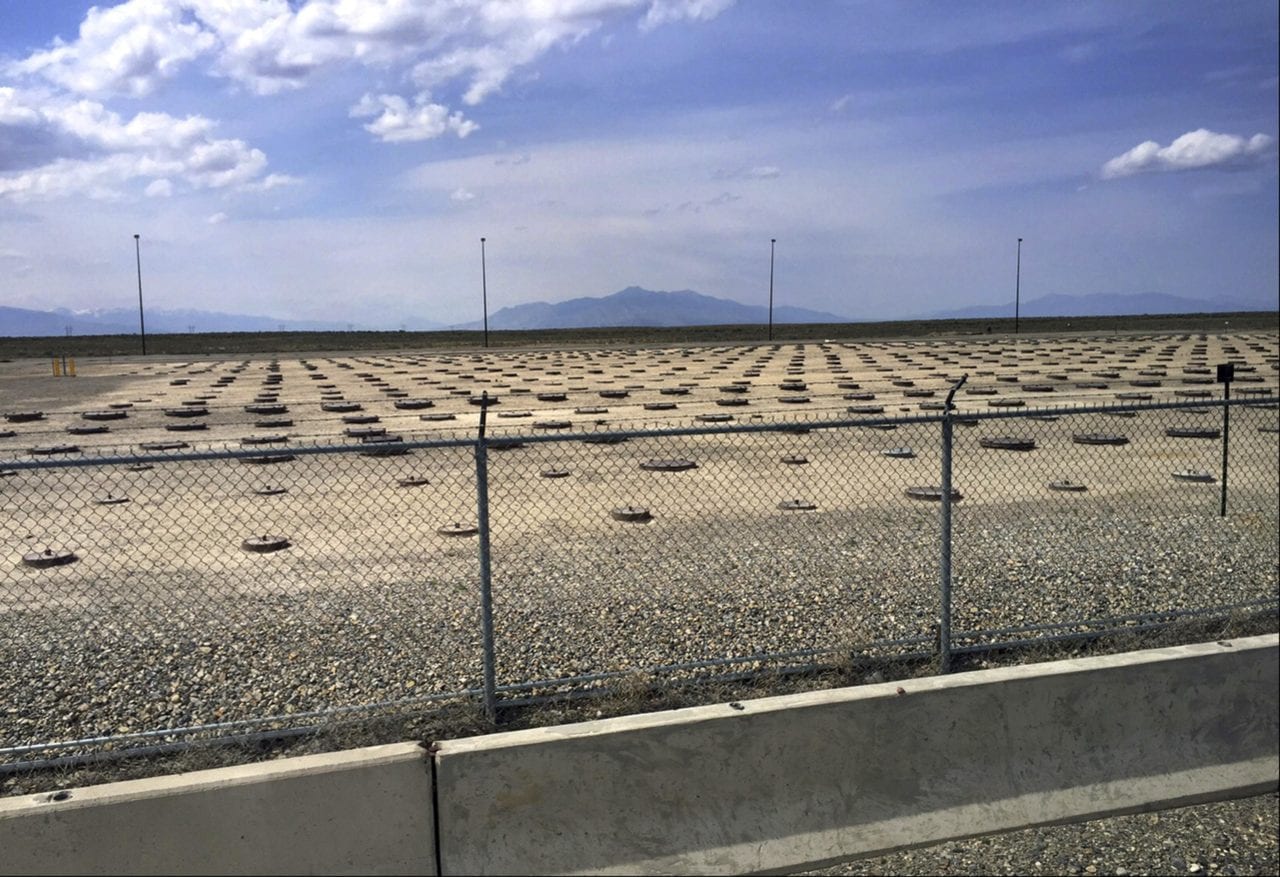
A combustive mixture of oxygen and substances within radioactive waste sludge being processed at the at the Energy Department’s Idaho National Laboratory is believed to be behind the April 11 rupture of four storage drums, according to site cleanup contractor Fluor Idaho.
At a briefing Tuesday with officials from the Idaho Department of Environmental Quality, the company and DOE representatives said uranium within the waste reacted with air introduced during processing and began to heat up, said Natalie Creed, the state agency’s hazardous waste unit manager.
Beryllium carbide also present in the waste reacted with water vapor and the heat to produce methane gas, Creed said by email Thursday: “Pressure built up, which led to the lids and some of the contents of the drums being ejected.”
The formal causal analysis report from Fluor Idaho should be issued within a week or so, Creed added.
Spokespeople for Fluor Idaho and the Energy Department did not respond to requests for comment before Weapons Complex Monitor’s deadline.
The drums were filled with waste from the former Rocky Flats nuclear weapons site in Colorado. The material had been buried for years in a subsurface area of INL prior to being brought to a building for repackaging. Remediation being done on the drums inside the building included checking for prohibited items such as aerosol cans prior to shipment to DOE’s Waste Isolation Pilot Plant (WIPP) in New Mexico. The four drums had not yet been certified for shipment.
Fluor Idaho informed the state last month it had found the fourth and final lid from the over-pressurized drums. The lid was found about 10 yards from its drum by an airlock entry within Room 106 of the WMF-1617 airlock at the Accelerated Retrieval Project 5 space, according to the contractor’s regular monthly report, dated Sept. 27, to the Idaho DEQ. The monthly update on the incident covered the period between Aug. 21 and Sept. 18.
Fluor had already provided that information in a Sept. 5 phone call, Creed said, adding she did not recall exactly when the lid was discovered. The other three lids were found during the first re-entry into the facility, within the first couple days of the incident, Creed said.
When asked why it took so long for the final lid to be located, Creed said the drum blast caused the lid to penetrate between inner and outer layers of the membrane in the room where the accident occurred.
The facility is a tension-membrane fabric building consisting of a structure frame and a membrane covering. This covering has “an inner liner and outer fabric membrane enclosing an insulating layer,” Creed wrote. The Energy Department and Fluor Idaho “indicated the drum lid had penetrated the inner liner and then slid down between the inner liner and the outer membrane.”
The object was removed and the inner liner has been repaired, Creed said.
The Idaho Cleanup Project contractor is also scheduled to file the next update on the drum incident by Oct. 31, followed by completion of cleanup and decontamination of the accident site in November.
During the incident, four 55-gallon drums of radioactive sludge overheated and ejected their lids, causing much of the waste to spill onto the walls and floor of the room. The exact amount is not known. The spilled waste has been collected and placed back into drums. Samples from the spilled sludge has been tested for flammable gases and other traits that might have contributed to the drum bursts.
The latest monthly report said workers are currently moving waste boxes produced by the cleanup work out of the building.
The fiscal 2019 National Defense Authorization Act directs the Government Accountability Office (GAO) to issue a report on the incident. The NDAA calls for GAO to work with the Senate Armed Services Committee on setting a schedule for the report and briefings to the panel. Among other things, the report is supposed to determine what procedures are in place to prevent shipment of combustible drums to WIPP.